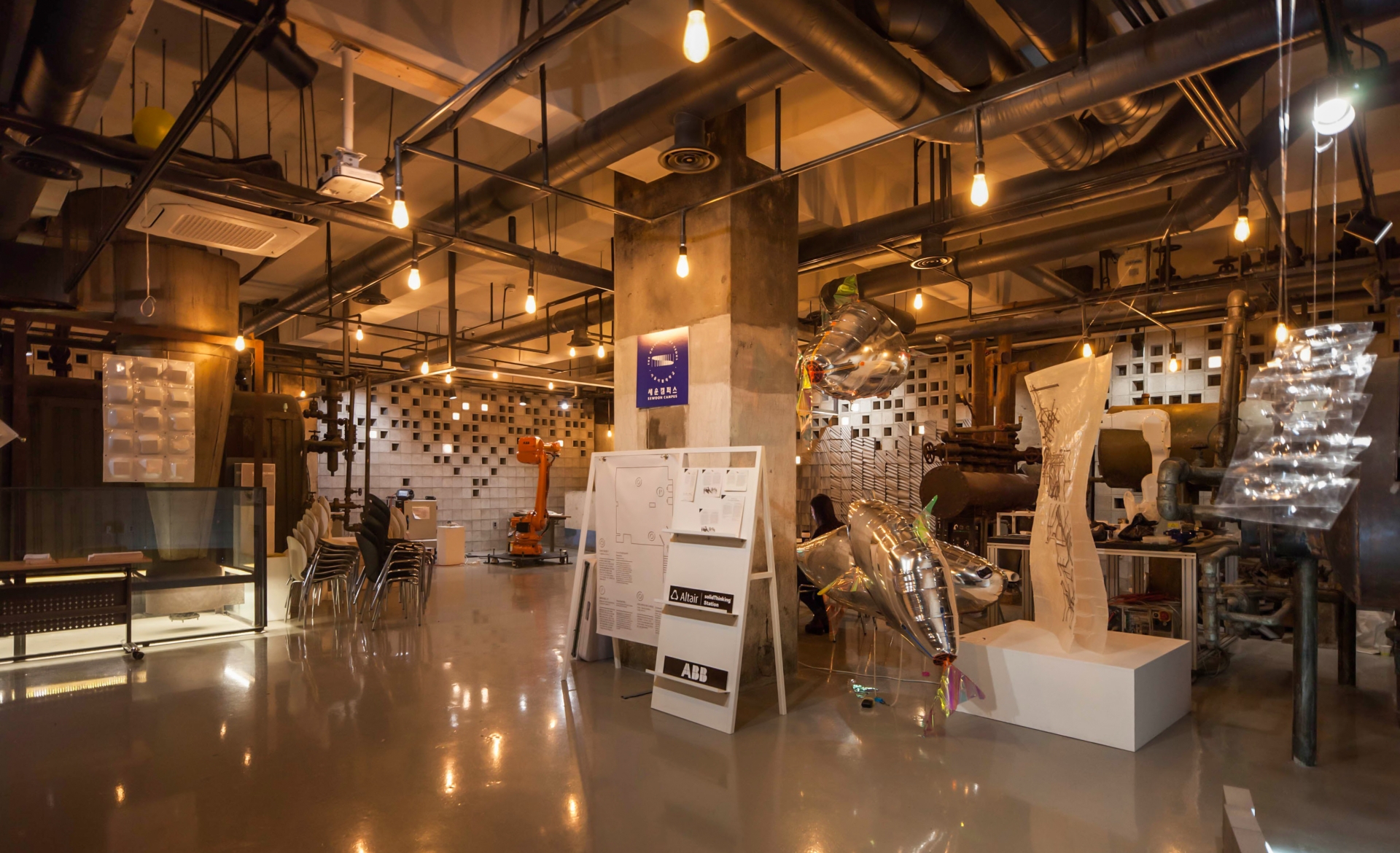A society where anybody can teach and learn from anywhere-the hyper-connected era has diversified the scope and format of education. Digitalized knowledge are readily distributed, transferred, and reconfigured. Professional knowledge are loaded on software as plug-ins, and anybody can find information about a subject area instantly with a few searches. Digital information technology brings exponential increase and spread of knowledge along with a open regime that tumbles authorities that monopolized knowledge. Living in an era of incessant learning, education is not unilateral, but instead occurs within a multi-prong network. Education is permeating into the field and participatory learning is becoming the power to solve complex social issues. Education in architecture is directly involved in the field, actively forming relations and playing a social role. Architecture education has always emphasized architecture’s social role. Real problems to include environmental issues like resource depletion and climate change, ethics and law are all subjects of learning. Now, we are capable of quickly interpreting the problems of architecture and cities in the new environment of the digital age. We can observe the world terrain with a bird’s eye view map and roam the city searching for information on a smart phone. People with same interests can simultaneously communicate with each other. New technology such as big data, digital fabrication, and virtual reality are naturally introduced. Education is no longer a job training process to train architects. Architecture education is now a lab to solve social issues, and the students are the executioners.
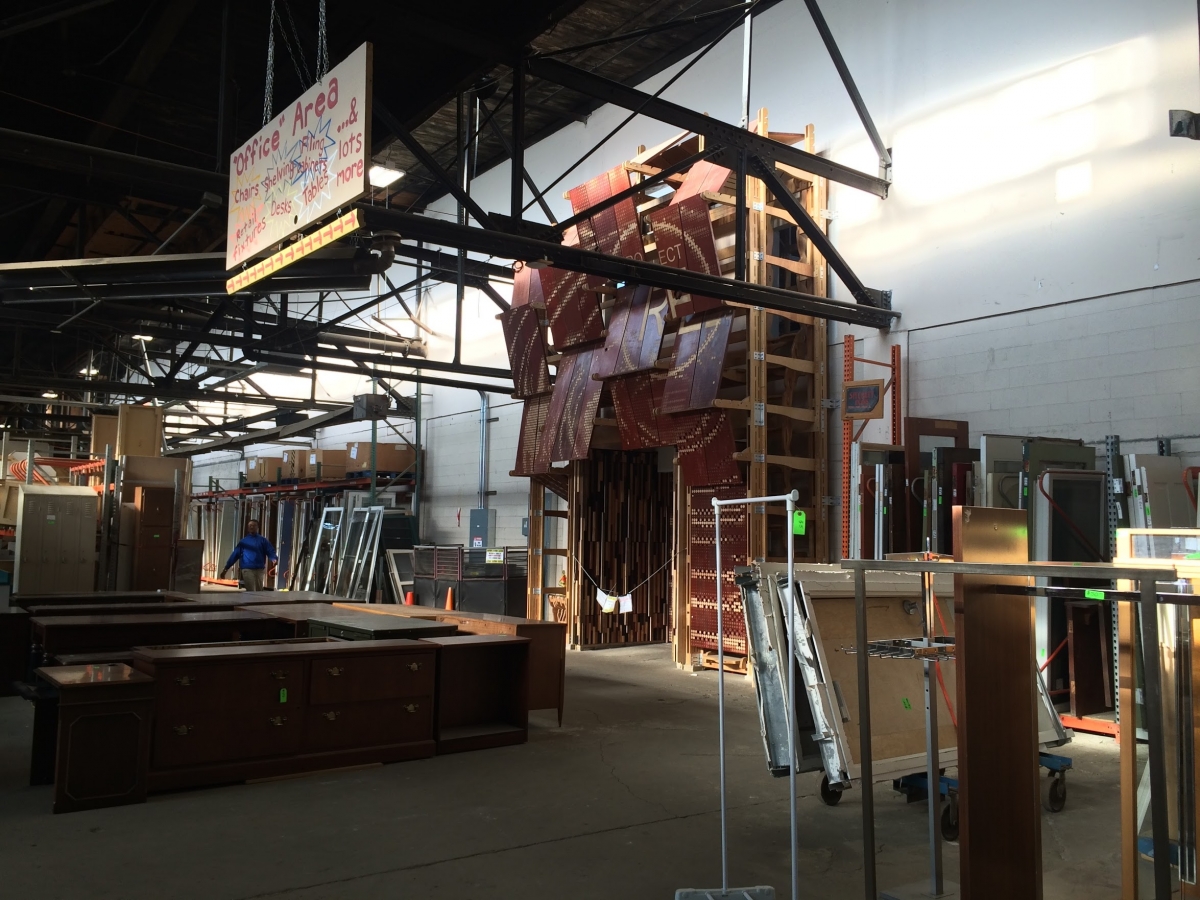 Entrance view of ‘PROJECT RE_’ at the Construction Junction which is a center for reusing architectural materials
Entrance view of ‘PROJECT RE_’ at the Construction Junction which is a center for reusing architectural materials
Situated Learning and Field Experiment
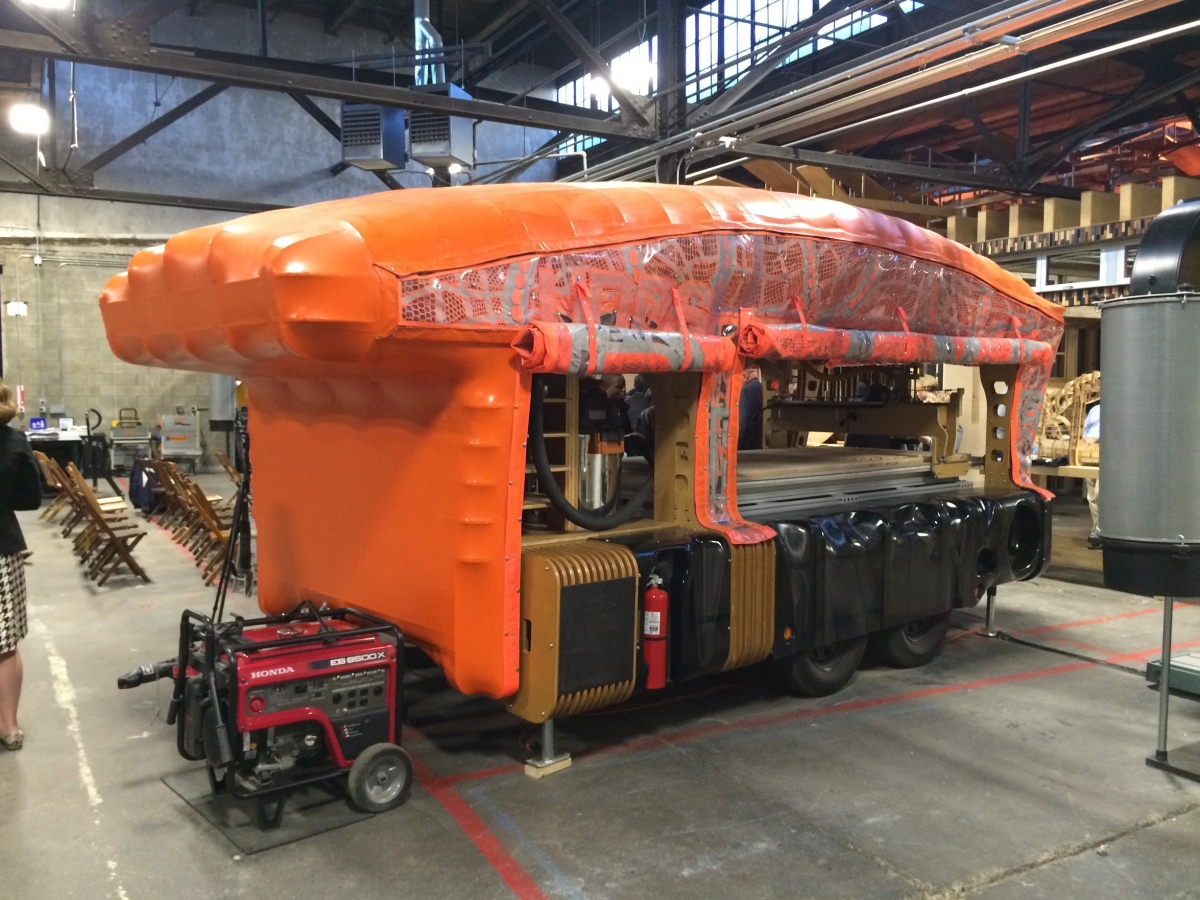
The mobile FabLab students designed and built for ‘PROJECT RE_’
Architectural Activism for Social Innovation
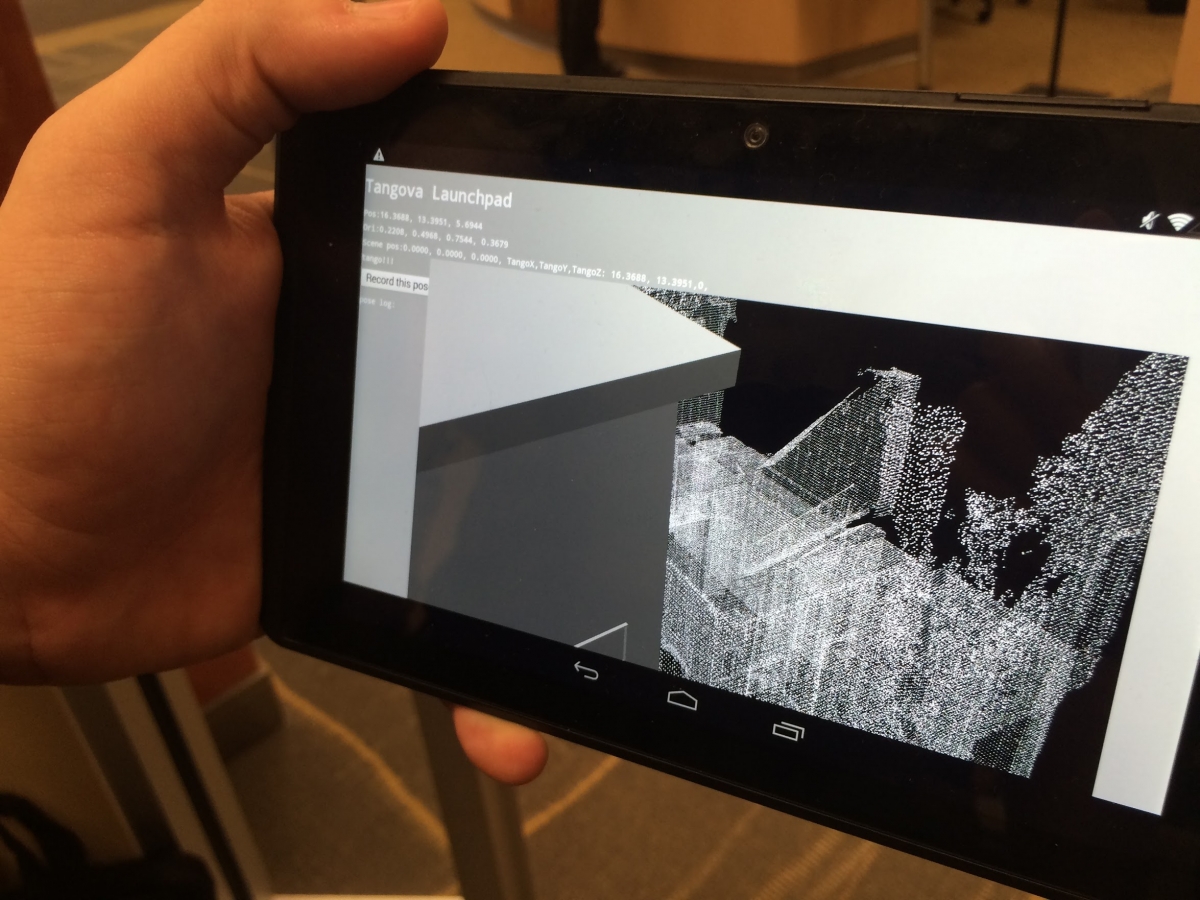
Virtual reality program of ‘PROJECT RE_’
Evolution of Knowledge Platform
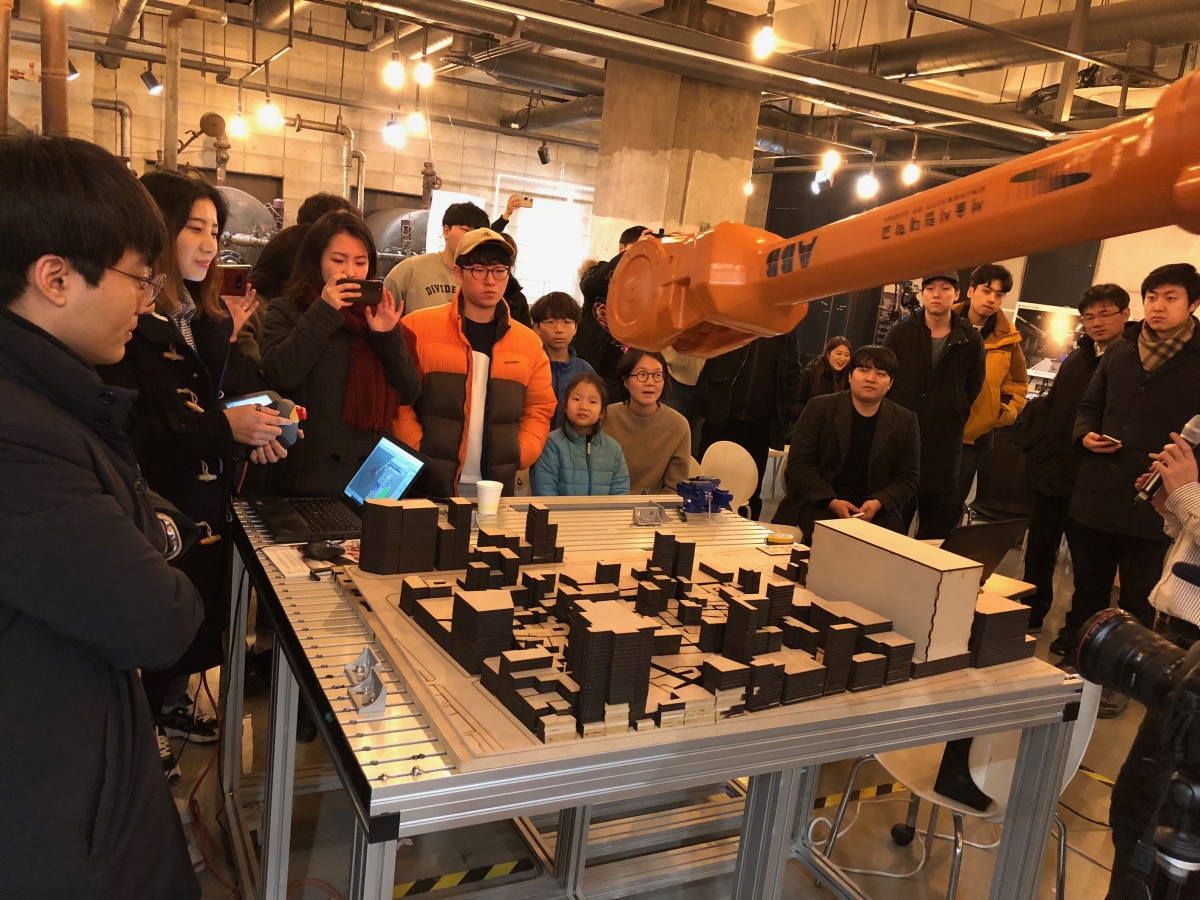
Students of University of Seoul Department of Architecture had the opportunity to learn robot technology that can be applied to architectural design.
Sewoon Campus
Seoul Metropolitan City has been executing the urban regeneration project ‘Again Sewoon’ since 2016 in the Sewoon Arcade area. The potentional of Sewoon Arcade which advocates ‘Maker City’ is lies on manufacturing and distribution businesses and its city center location. Located where parts can be easily procured and manpower rich with manufacturing skills and experience, Sewoon Arcade is like a colossal experiment lab for young business owners and creators who seek to realize their ideas. As a network among creators has been easily and quickly formed through the recent Maker Movement and Open Source Movement, diverse activities such as workshops, hackathon, and social cooperatives take place in and around Sewoon Arcade which used to have a high entry barrier.
As the strategic organization of the ‘Again Sewoon’ project, the University of Seoul is a partner in operating ‘City Campus’. The University of Seoul’s Sewoon Campus is not a physical space but rather an abstract concept that includes every event and inter-person network occurring in the space shared with the Sewoon Arcade community. As an expanded school model, Sewoon Campus not only provides opportunities for on-site education and empirical research for the school members, but also plans to develop into a platform where craftsmen and makers of Sewoon Arcade and the general public can meet and work together. Through this, the goal is to discover potential learning resources in the area such as production infrastructure, local technicians, new technology researchers, and creators, in order to expand the ecosystem of education. The intent is to create a plaza for communication encompassing all generations and pass down technology.
The architecture education carried out as an experiment at Sewoon Campus retains the characteristics of digital society innovation. The robot fabrication workshop and 3D printing workshop during the past year applied new technology into architecture materials and methods, and envisioned what future technology has in store.
The architecture design studio ‘Obstacle the Sewoon again’ saw how digital architecture education could potentially contribute to the city. Students were able to observe the city through a fresh perspective and their activities invigorated the local communities. The ‘Sewoon Snack Lab’ project that listened to and archived the sensitive concerns of the original local residents while serving new food and the ‘Sewoon Apetite’ project that analysed Sewoon Arcade’s space with food as a medium summarized the studies performed by the students into architectural visual expression. The ‘Sewoon on the Web’ project which used models and web virtual reality to recreated the ideas from road projects in the 1930s to development plans and competitions of the present, allows us to see the urban and architectural discourse of Sewoon Arcade in one spot. In addition, the ‘믐믐 project’ expressed the façade of the building cluster of Sewoon Arcade into a long panorama photo and proposed a way to continuously picture the façade utilizing drones. The ‘Old Future’ project that created a mechanical clock was conducted with the advice and help from watch craftsmen in Yeji-dong.
The liveliness created by the students as they perform in an urban regeneration district and the generous social permissions they get as students enabled new city governance surpassing conventional education. The dialogue between young students who can easily learn and use new manufacturing methods such as digital fabrication and seasoned craftsmen who have dedicated their life in mastering one craft process presented hints for devising solutions for urban problems. While they acted as the governance practitioners on scene, students gained confidence in learning, changing, and building our city, which in turn established the city as a place of learning. The challenge Sewoon Campus took upon, which drives architectural knowledge and perspective into various forms of implementations, is a meaningful attempt because it can be experimented anywhere in the city where urban regeneration is only expanding.
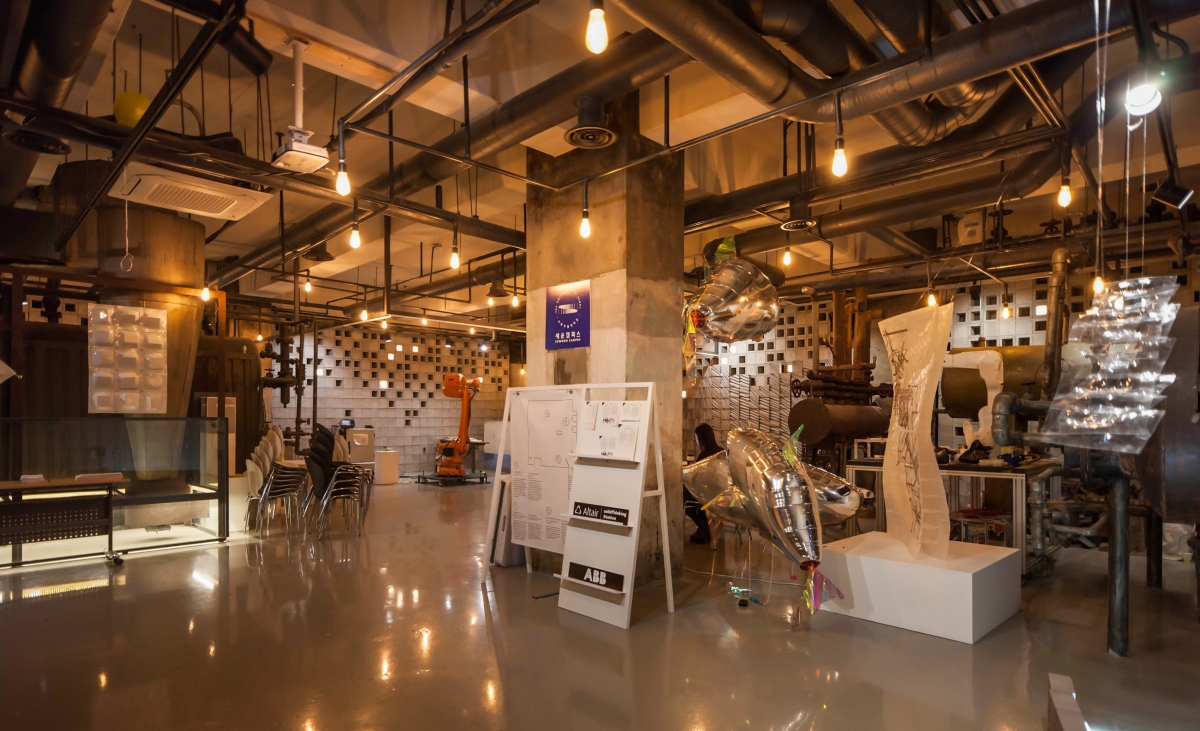
New education which is expanding into digital pedagogy is acting as the engine for social innovation. On-scene education has long been emphasized, but now, individuals and students have the ability to realize their creativity and imagination by themselves thanks to the advancement of digital technology. The digital is no longer a virtual existence or technological term that stands in contrast with the analogue. It is an actual substance that bolster our life.





